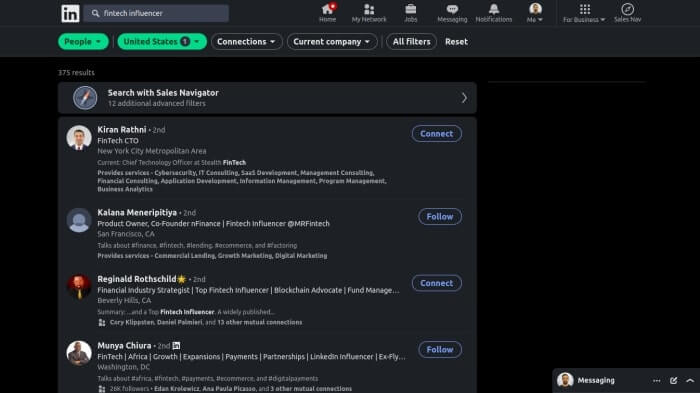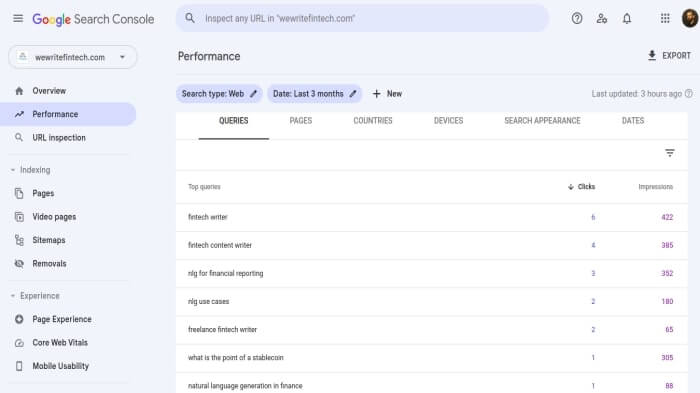Fintech Content Marketing - 8 Steps To Proven Success


Fintech companies that don’t produce good content on a regular basis are not doing marketing right. An effective fintech content marketing strategy will build brand awareness with your target audience and, ultimately, drive sales.
From ideation to creation to publishing content, you should have a solid understanding of content marketing and how it fits into your fintech company. This blog post covers that in full detail so you can hit the ground running in your digital marketing efforts.
Why You Should Care About Content Marketing for Fintech
Companies that choose not to create content are choosing to let potential customers go to their competitors who do choose to create high-quality content. The ways of traditional marketing must adjust to the information age, which is dominated by content.
The global digital content creation market value is estimated to grow over 13% annually from 2023 to 2030, which means fintech companies creating content will catch an important wave. Quality content can take a number of forms, including:
- Blog posts
- Social media posts
- How-to guides
- Landing pages
- New articles
- White papers with in-depth insights
When you write content and publish it for the world to see, you’re building trust, building brand authority, staying top-of-mind, bringing more traffic to your website, acquiring more leads, and growing your business. In the increasingly competitive world of fintech, implementing your own content marketing strategy just makes sense.
8 Steps to Get Your Fintech Content Marketing Moving
Getting your content marketing efforts executed correctly doesn’t have to be complicated. Following these simple steps, your marketing team should be well on its way to reaching your target audience using helpful content so you can convert more leads into customers.
1. Keep a Pulse of the Fintech Industry
The fintech world is constantly changing from lending to payment processing to banking-as-a-service. Our complex world requires newer and newer financial products that reach an ever-emerging market. That’s why understanding market trends in fintech is so important.

Knowing which direction your content marketing strategy should be aimed at depends on your company’s goals and how it mixes into the current trending topics. Being top of mind with your audience doesn’t work if you’re stuck in the 1990s (fintech didn’t even exist then!).
A great example of staying in tune is following a thought leader or two on social media. You can find a lot of relevant and informative industry experts who provide insights into the fintech world regularly. My go-to is LinkedIn, but Twitter is also a good option.
2. Set Up Your Fintech Company With a Foundation for Success
Effective brand awareness starts with knowing who you’re speaking to, which means understanding your exact target audience as well as their goals and pain points. A fintech brand that can offer content that speaks to these people is going to be highly effective at customer acquisition.
Creating buyer personas is a great place to start. Here’s a quick list of questions you can ask to create your own so your content strategy can target the right people:
- What’s their demographic information?
- What kind of technology do they use?
- What are their goals/motivations?
- What challenges are they trying to overcome?
- What type of messaging would resonate with them?
You can have one or more of these personas, but the important part is creating them and ensuring they’re accurate. You can do that by interviewing your audience or existing customers. This should help determine your content marketing strategy’s north star.
Another key factor to creating a foundation for success with your content marketing efforts is establishing a brand identity and voice. Are you serious and straightforward or playful and pithy? B2B (business-to-business) fintech companies will have a different brand identity and voice than B2C (business-to-consumer) fintech businesses.
3. Build an Effective Fintech Content Marketing Strategy
Now that you’ve dialed who you and your ideal customers are, it’s time to build your fintech content marketing strategy. Creating an awesome fintech product or service is one thing, but you need to ensure it can get in front of the right people. A well-organized content marketing effort will do that.
Right away, you need to define your company’s goals and objectives. This comes from leadership and should be the compass of how your teams produce content. If your goal is to serve a broader audience, your approach is going to be much different than a business servicing a niche audience.
You also want to ensure you’re monitoring your competition and performing market research. In my opinion, this can be a secondary concern if you are hyper-focused on your customers since optimizing for them will make your company ultra-competitive. But it doesn’t hurt to see what the competition is up to occasionally.
Lastly, every dollar spent on creating content that doesn’t get published through the correct channels is a lost dollar. Go back to your personas and figure out exactly how your ideal customers get their content. It could be from newsletters, social media, blogs, podcasts, or wherever. Understanding this will guide your fintech business so you can raise awareness effectively using the right formats on the right channels.
4. Craft Compelling Fintech Content
Content is the centerpiece of your fintech content marketing efforts. Being able to create engaging, informative content that speaks to your audience is your goal. To get there, you need to come up with relevant topics and keywords that they’re interested in and search for. That requires some creativity in regard to topic creation, but keywords can be generated using free and paid keyword research tools.

Once you’ve come up with the topics and keywords you need to write about, it’s now time to get your writers writing. Again, engaging and informative content that speaks to your audience is the primary goal. In my opinion, blog posts are the best way of delivering this because it’s long-form. However, it can be broken up into bite-sized content for social media, like LinkedIn or Twitter.
A great way to improve your fintech and financial content is to include visuals. Being able to communicate complex topics purely through text can be challenging, so leveraging a designer who can create visually appealing infographics and customer images can go a long way. The very same can be said for producing educational videos and even hosting webinars on your website.
5. Optimize Your Content for SEO
So you’ve written some compelling content based on the topics and keywords you came up with. Now’s the time to execute a bit more on the technical side so your company can actually get your content in front of potential clients and new audiences. When it comes to blog content on your website, this means investing in search engine optimization (SEO) so that your articles can rank.
A good first step to getting your website content ranking on search engines, like Google, Bing, or DuckDuckGo, is to implement basic on-page SEO techniques. This can be implemented for your website as a whole but should be absolutely done for the articles you write and publish on your site.
Some simple on-page SEO techniques include:
- Use your target keyword in the H1 (title) heading and at least one H2 heading
- Break up the text to avoid “walls of text”
- Include a relevant featured image
- Reduce the dimensions of your images and compress them
- Link to external and internal content
- Ensure all external links are marked “rel=nofollow”
This is just the tip of the iceberg when it comes to fintech SEO, but these will get you moving in the right direction.
Another important aspect of good SEO is implementing off-page SEO strategies. Simply put, the ultimate goal of off-page SEO is to get as many authoritative sites (apart from yours) linking to your content. This is often referred to as “link building” and is an outreach-heavy strategy that can get your website and articles in front of many consumers.
6. Leverage Social Media and Other Channels for Distribution
Getting your content in front of your audience to improve customer acquisition is one thing, but leveraging social media and other channels is another. For fintech companies, focusing on the channels that fit your brand and where your audience lives is paramount. Make sure you choose the right platforms.
Once you know where you plan on sharing, like LinkedIn, Twitter, TikTok, or YouTube, you should think about repurposing your blog content a bit and start sharing it. Of course, you can actually share your blog posts, but each channel has its unique formatting and style, so matching that with your message is key.
An extremely valuable resource these types of channels have is the ability to advertise your fintech content. By leveraging data-driven insights, you can optimize your brand awareness and online reach so more people can take advantage of your product or service offerings.
7. Measure and Analyze Your Content Marketing Performance
“If you can’t measure it, you can’t manage it.” When it comes to a fintech content creation process, that couldn’t be more true. Knowing what moves the needle is incredibly important, so setting up key performance indicators (KPIs) and regularly monitoring them is a requirement.

Depending on the content you publish, your KPIs may differ. Here are a few to keep an eye on:
- Views
- Engagement
- Clicks
- Click through rate
- Bounce rate
- Average time on page
- Pages per visitor
These can pertain to blog posts, social media, and other media channels. As long as you’re tracking and analyzing the content metrics that help your organization achieve its goals, you’re in a good position.
As you build up an arsenal of data to analyze, you’re going to want to iterate on your content to ensure it’s hitting the mark with your audience. This is an optimization process and can take time, but continuously improving your content will improve consumer engagement and, ultimately, your fintech company’s bottom line.
8. Build Strong Relationships With Influencers and Thought Leaders
Influencer marketing and thought leadership is more important than ever. Building trust with your audience has a lot to do with the network you build around your organization. Who you interact and partner with is an important part of a customer’s journey of discovering your brand.
As a matter of fact, the influencer marketing platform market is expected to grow annually by 32.5% up until 2029. That’s something companies from any industry shouldn’t ignore.
Being able to identify the relevant influencers in the fintech space that you’re in is key here. Influencer marketing can be a major positive for brands if done correctly. We often look at it as something to avoid since it can sometimes appear sketchy (especially social media influencers). However, there are opportunities to engage influencers positively by collaborating and co-creating, like podcasts, guest blog posts, and more.
Final Thoughts
Fintech content marketing doesn’t have to be complicated. Implementing these basic steps can make a world of difference, especially if you’re winging it. From understanding the fintech industry and your customers to creating content to continuously improving, these will all help boost your content marketing for the better in time.
In the end, the main goal in content marketing is to produce as much quality content as possible across the right channels so your company can build brand awareness, expand online reach, and, ultimately, drive sales. It’s not always the easiest process to follow, but it’s an effective one that’s becoming more and more essential in the information age.

